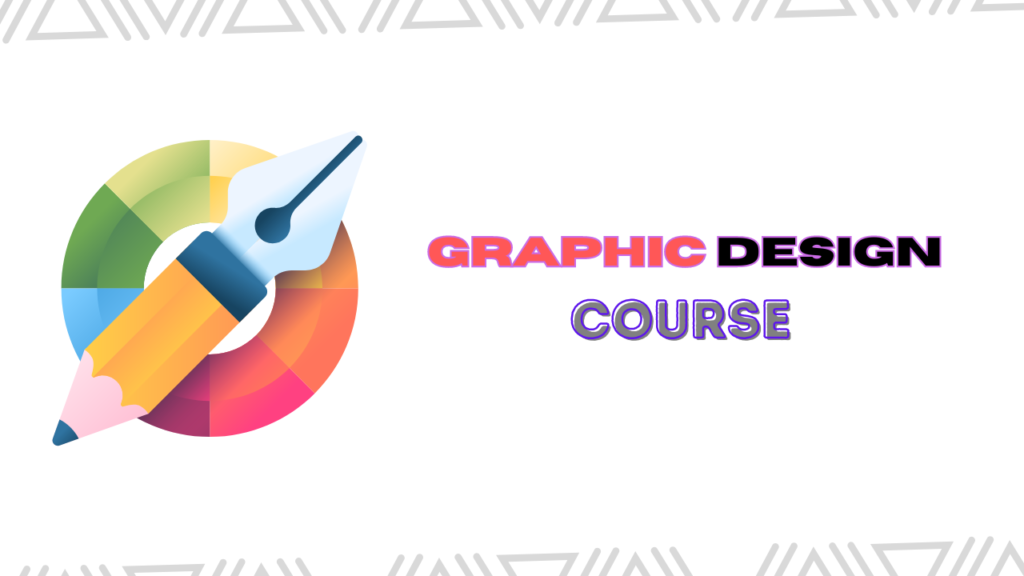Today Blog about graphic design course free download in 2024 || paid graphic design course how to free download.
graphic design course free download step
- Visual Communication: At its core, graphic design is about visually communicating ideas, messages, or information to a target audience. Designers use various elements like images, symbols, and text to convey these messages effectively.
- Typography: Typography refers to the art and technique of arranging typefaces (fonts) in a visually appealing and readable manner. Graphic designers often choose fonts carefully to complement the overall design and convey the right tone or message.
- Imagery and Illustration: Graphics designers incorporate images and illustrations into their designs to enhance visual appeal and convey specific concepts or emotions. This may involve creating original artwork, manipulating existing images, or selecting stock photos.
- Color Theory: Understanding color theory is crucial for graphic designers. They use color strategically to evoke certain emotions, create visual hierarchy, and enhance readability. Different colors have different psychological effects, and designers leverage this knowledge to create compelling designs.
- Layout and Composition: Graphic designers are responsible for arranging visual elements on a page or screen in a harmonious and visually appealing way. This includes considering factors like balance, symmetry, proportion, and whitespace to create a balanced composition.
- Brand Identity: Many graphic designers work on creating or maintaining brand identities for companies or organizations. This involves designing logos, color schemes, and visual assets that represent the brand’s values and personality consistently across different platforms.
- Print Design: Graphic designers often work on projects intended for print, such as posters, brochures, packaging, and advertisements. They must understand print techniques and specifications to ensure that their designs translate accurately from screen to print.
- Digital Design: With the rise of digital media, graphic designers also create designs for websites, mobile apps, social media, and other digital platforms. This may involve considerations like responsive design, user experience (UX), and interactive elements.
- Motion Graphics: Some graphic designers specialize in motion graphics, creating animated visuals for videos, presentations, and multimedia projects. This requires knowledge of animation techniques, timing, and storytelling principles.
- Software Skills: Graphic designers use various software tools to create and manipulate visual content. Popular graphic design software includes Adobe Photoshop, Illustrator, InDesign, and Sketch, among others.
- Course Details : graphic design course free download how ?
Overall, graphic design is a versatile field that encompasses a wide range of skills and applications, playing a crucial role in shaping how information is presented and perceived in the modern world.

step by step guide to learn graphics design
- Understand the Basics: Familiarize yourself with the fundamental principles of design, including typography, color theory, layout, and composition. There are plenty of online resources, books, and courses available to help you grasp these concepts.
- Study Design Fundamentals: Dive deeper into design theory by studying topics such as visual hierarchy, contrast, balance, and grid systems. Understanding these principles will provide a solid foundation for your design work.
- Learn Design Software: Acquire proficiency in graphic design software tools such as Adobe Photoshop, Illustrator, and InDesign. Start with tutorials and beginner courses to learn the basics, then gradually advance to more complex techniques.
- Practice Regularly: Design is a skill that improves with practice. Set aside time each day or week to work on design projects, whether they’re personal projects, exercises from tutorials, or real-world briefs. Experiment with different styles and techniques to broaden your skills.
- Seek Feedback: Share your work with others and solicit constructive feedback. Join online design communities, forums, or social media groups where you can connect with other designers and receive critiques on your work. Constructive feedback will help you identify areas for improvement and grow as a designer.
- Build a Portfolio: As you gain experience, start compiling your best work into a portfolio. Your portfolio should showcase a diverse range of projects that highlight your skills and creativity. Consider including both personal projects and client work to demonstrate your versatility.
- Explore Specializations: Graphic design is a broad field with many specializations, such as branding, web design, motion graphics, and illustration. Explore different areas of design to find what interests you the most. You can then focus your learning and portfolio-building efforts accordingly.
- Stay Updated: The field of graphic design is constantly evolving, with new trends, technologies, and tools emerging regularly. Stay informed by following design blogs, attending workshops or conferences, and keeping up with industry news. Continuously learning and adapting will help you stay relevant in the field.
- Network and Collaborate: Networking is essential in the design industry. Attend design events, workshops, or meetups to connect with other designers and potential clients. Collaboration with other creatives can also be a valuable learning experience and can lead to exciting opportunities.
- Keep Experimenting: Don’t be afraid to push the boundaries and try new things in your design work. Experiment with different techniques, styles, and mediums to keep your creativity flowing and your skills sharp.
By following these steps and staying dedicated to your learning journey, you can become a proficient graphic designer capable of creating impactful visual communication.

How to learn video Editing Skill in 2024
- Understand the Basics: Familiarize yourself with the fundamental concepts of video editing, such as video formats, resolutions, frame rates, and aspect ratios. Learn about the various types of editing software available and their features.
- Learn Video Editing Software: Choose a professional video editing software to learn and master. Popular options include Adobe Premiere Pro, Final Cut Pro, DaVinci Resolve, and Avid Media Composer. Start with tutorials and beginner courses to understand the basics of the software interface, tools, and workflow.
- Study Editing Techniques: Dive deeper into editing techniques and principles, including cutting, trimming, transitions, effects, color correction, audio editing, and synchronization. Explore different editing styles and genres to expand your skillset.
- Practice Regularly: Practice is essential for mastering video editing. Start by editing your own footage or using free stock footage available online. Experiment with different editing techniques and workflows to develop your style and proficiency.
- Watch and Analyze Films and Videos: Watch a wide range of films, TV shows, documentaries, and online videos to study the work of other editors. Analyze editing techniques, pacing, storytelling, and visual effects to gain insights and inspiration for your own projects.
- Build a Portfolio: As you gain experience, start building a portfolio showcasing your best work. Include a variety of projects that demonstrate your editing skills, creativity, and versatility. Your portfolio can include personal projects, client work, or collaborations with other filmmakers.
- Seek Feedback: Share your work with peers, mentors, or online communities to receive constructive feedback. Feedback can help you identify areas for improvement and refine your editing skills. Be open to criticism and use it as an opportunity to grow as an editor.
- Specialize and Diversify: Consider specializing in a specific area of video editing, such as narrative filmmaking, documentary editing, music videos, corporate videos, or social media content. At the same time, be open to diversifying your skills and exploring new opportunities within the field.
- Stay Updated: The video editing industry is constantly evolving, with new technologies, trends, and techniques emerging regularly. Stay informed by following industry news, attending workshops or conferences, and participating in online forums or communities.
- Network and Collaborate: Networking is essential in the video editing industry. Connect with other filmmakers, directors, producers, and professionals in related fields. Collaborate on projects, attend industry events, and build relationships that can lead to new opportunities and collaborations.
By following these steps and staying dedicated to your learning and professional development, you can become a skilled video editor capable of creating high-quality content across a variety of platforms and genres. graphic design course free download kaise kare.
♻️Share And Support us♻️
Course Teacher : – graphic design course free download
Course Language : English
Course Size : 50 GB+
Course Real Price : Around 50000+
Course : graphic design course free download
graphic design course free download Click For Download :

graphic design course free download To Our Telegram Group :

